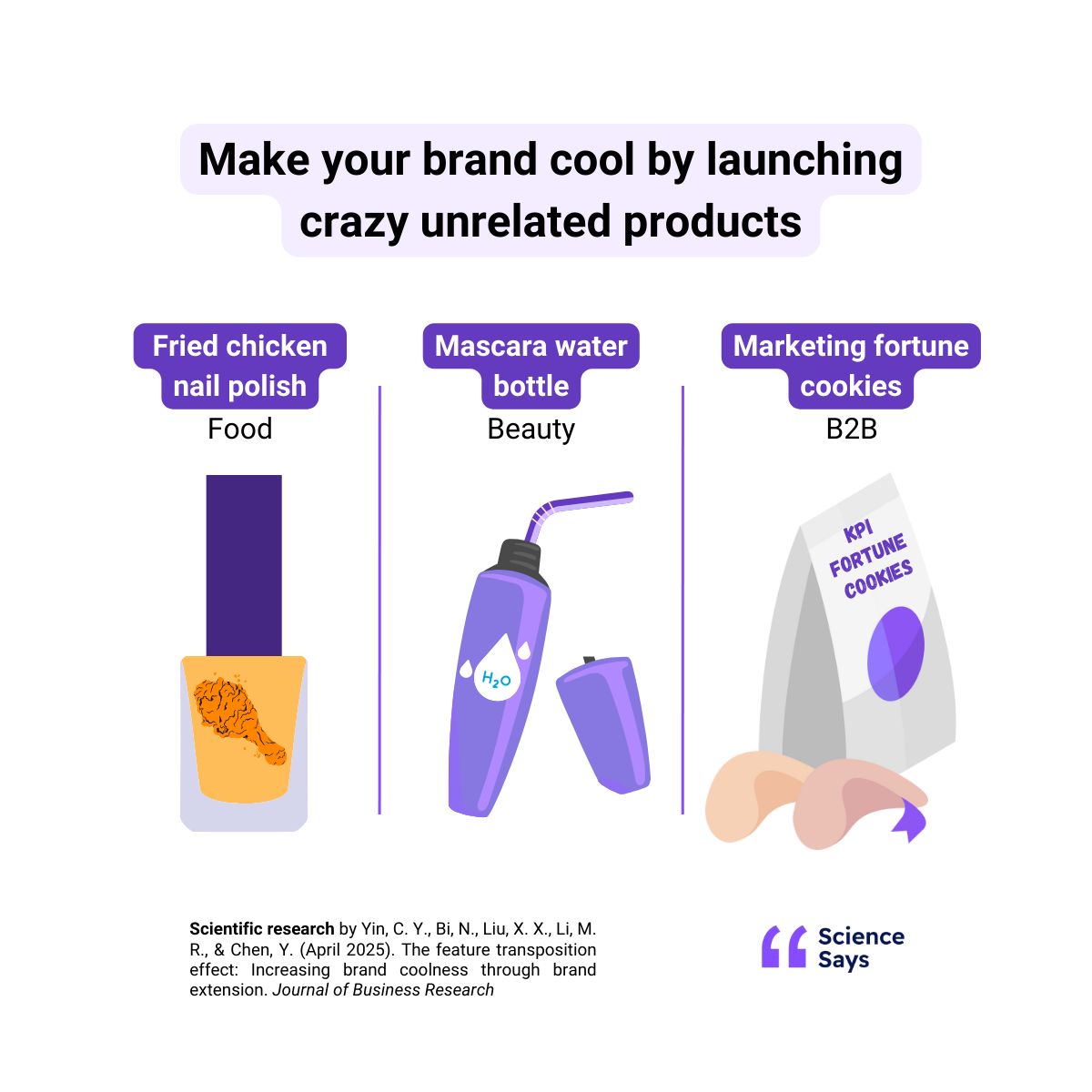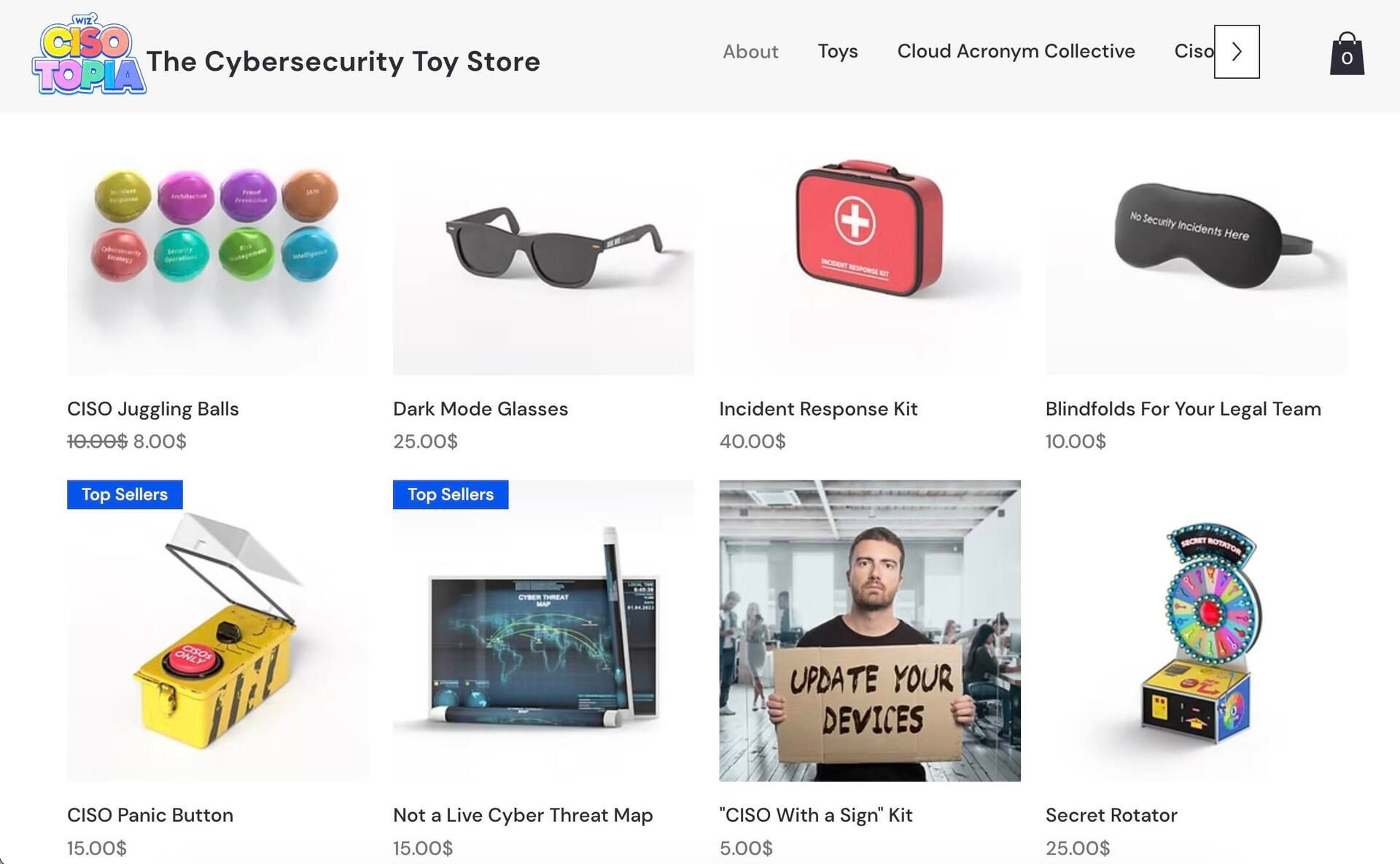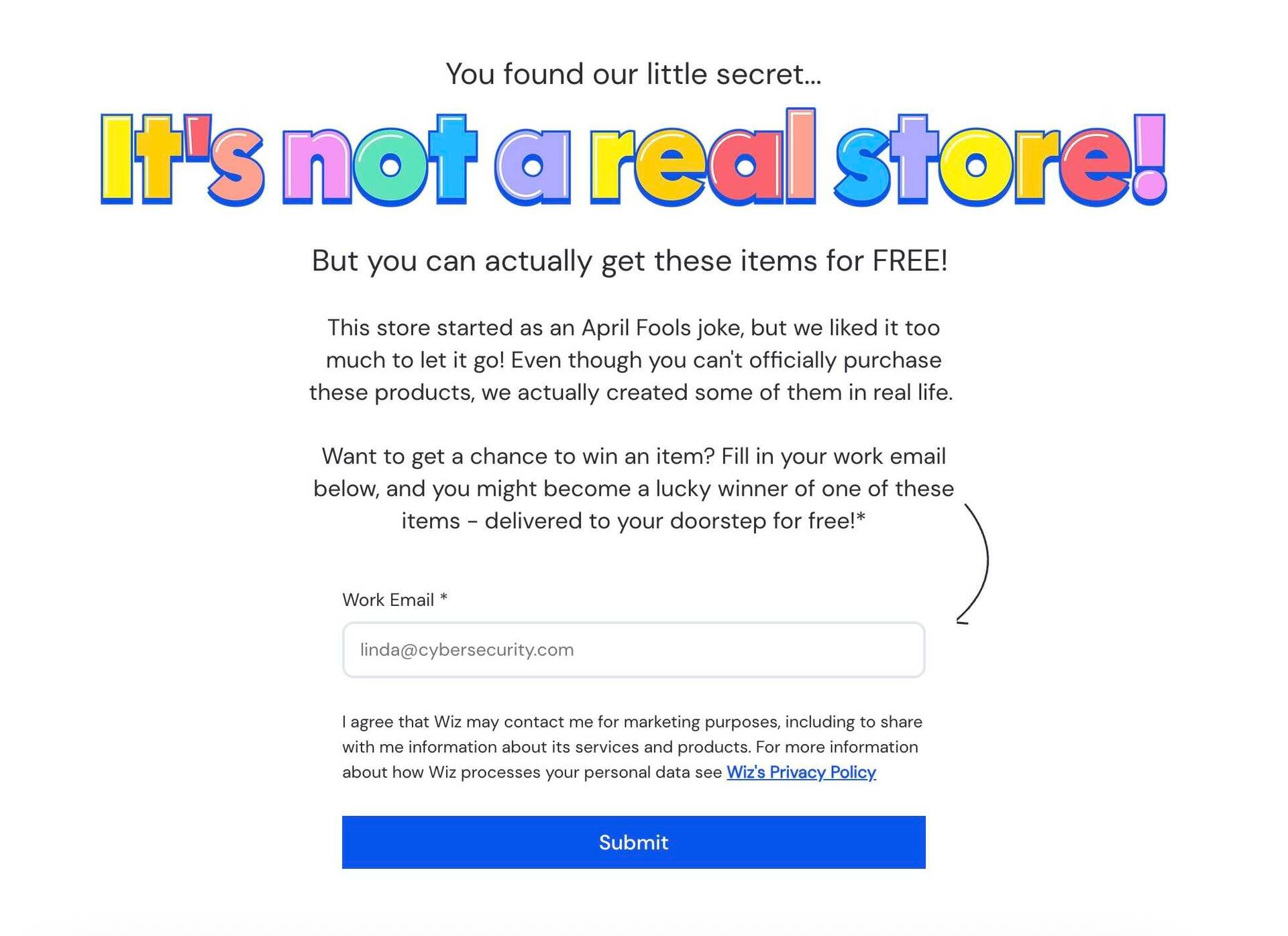- Science Says
- Posts
- Launch absurd mini-products to make your brand cool
Launch absurd mini-products to make your brand cool
Make your brand stand out by rolling out spin-off products in unrelated categories (e.g. KFC nail polish, cybersecurity-themed toys).
📝 Context
Topics: Brand & Strategy | Product
For: B2C. Can be tested for B2B
Research date: April 2025
Universities: Northeast Normal University, Guizhou University, Texas A&M International University
Imagine you’re a DTC skincare brand, competition is high and branding is the only way you can win. You want to launch a new special product or marketing campaign to stand out from your main competitor. In a creative brainstorming session, your team comes up with 2 options:
A limited edition version of your vitamin C serum in a travel format for summer
A strawberry-scented candle shaped like your best-selling product
Sure, the first one is more on brand, people have been asking about it. But the second one is just… cooler.
P.S.: To boost your brand further, use clever humor (e.g. make a witty joke). Be careful, any generic humor does not work - it must be clever.
📈 Recommendation
To make your brand stand out and feel cool, launch an unrelated product in a category far and different from your core one (e.g. cookies from a marketing agency specialized in promoting books) and pick one main brand feature to use in the extension (e.g. make the cookies in the shape of books).

🎓 Findings
Launching an unrelated product in a totally different category (e.g. clothing from a snacks brand) makes people perceive the brand as cooler.
Across 4 experiments with 1,454 people and an analysis of over 5,000 social media comments, researchers found that:
When real brands launched extremely unrelated products (e.g. KFC’s fried chicken-scented nail polish, White Rabbit’s candy-scented body lotion, KFC Crocs), people felt surprise, joy and saw the brand as cooler
When a hot pot brand launched a spicy flavored toothpaste, people rated the brand as 20% cooler
When a snack brand launched an unrelated product of home furniture that had the shape of their signature cookie (vs one with no visual connection), people rated it as 11.5% cooler
The effect is:
Stronger when the brand is popular or well-known. When people saw herbal coffee marketed by a popular brand (vs a lesser known brand), they rated the brand as cooler
Stronger when the extension is co-branded. For example, people rated McDonald’s 9.7% cooler when they launched a sauce-themed sneaker with Adidas
Weaker when the new product is in a category near the core brand’s one (e.g. Instant noodle extension for a hot pot brand)
🧠 Why it works
There’s a mismatch between our expectations and reality when we see brands selling unrelated products.
This surprises us and triggers humor.
We associate humor with coolness because it signals autonomy, creativity, and rebellion against norms.
Which makes us perceive these extensions as rebellious and intentional.
This reflects on the brand which we also see as cooler than before.
✋ Limitations
The study analyzed people aged 20 to 40 and did not consider people’s personal characteristics. Some people (e.g. older people) might be less open and less drawn to surprise and novelty so the effect might not be as strong for all customers.
It’s unclear how this translates into actual purchase behavior, though it likely positively influences it for brands that benefit from being cool (e.g. an office supplier probably won’t benefit from it as much as a clothing brand).
The research did not consider brands’ awareness and reputation. It’s likely that the effect is weaker for lesser known brands in their specific category.
The study only looked at consumer goods (e.g. food and beverage, personal care, cosmetics), it’s unclear if the effect is the same for B2B.
The experiments were with Chinese consumers. Other cultures may perceive what is “cool” differently.
👀 Real-life example
If you get creative enough, you can do this in virtually any industry. Tom Orbach, Head of Growth at cloud cybersecurity company Wiz shared in his newsletter Marketing Ideas (highly recommended for creative ideas!) how they wanted to stand out to their target audience of Chief Information Security Officers (CISOs).
So on April Fool’s day they launched “CISOtopia”. A (fake) toy store for security leaders full of inside jokes for cybersecurity experts. It went viral within their target audience, with over 3,500 attempts to buy.

✅ Why this works
Toys is an unexpected, profoundly different category for cybersecurity. This triggers humor and coolness.
The spin-off is relatable because it keeps a core business trait: all toys are security-related.
Since it was an April Fool’s initiative, the team got away with a fake store, most products on sale do not actually exist. This minimized effort.
When people try to order, they are sent instead to a lead generation form, with a surprise reward.

📈 Replicate it
Explaining how they came up with this, Tom suggests using the framework “The world’s first [format] for [audience]”. For example:
The world’s first Halloween costumes for UX designers
The world’s first comic book for B2B SDRs
The world’s first dating app for SaaS founders
🔍 Study type
Online experiments and market observation (analysis of 5,031 social media comments)
📖 Research
The Feature Transposition Effect: Increasing Brand Coolness Through Brand Extension. Journal of Business Research (April 2025)
🏫 Researchers
Cheng-Yue Yin. Northeast Normal University
Nan Bi. Northeast Normal University
Xiao-Xin Liu. Northeast Normal University
Meng-Ran Li. Guizhou University
Yong Chen. Texas A&M International University
Remember: This is a new scientific discovery. In the future it will probably be better understood and could even be proven wrong (that’s how science works). It may also not be generalizable to your situation. If it’s a risky change, always test it on a small scale before rolling it out widely.
🎁 Bonus: Trivia
Check your knowledge from previous insights.
❓ Guess the effectMisspelling your brand name (e.g. “Krush Kola” vs “Crush Cola”) makes your brand look… |
P.S.: Click ‘Continue’ after you vote to redirect to the insight that explains the science and the answer 😉